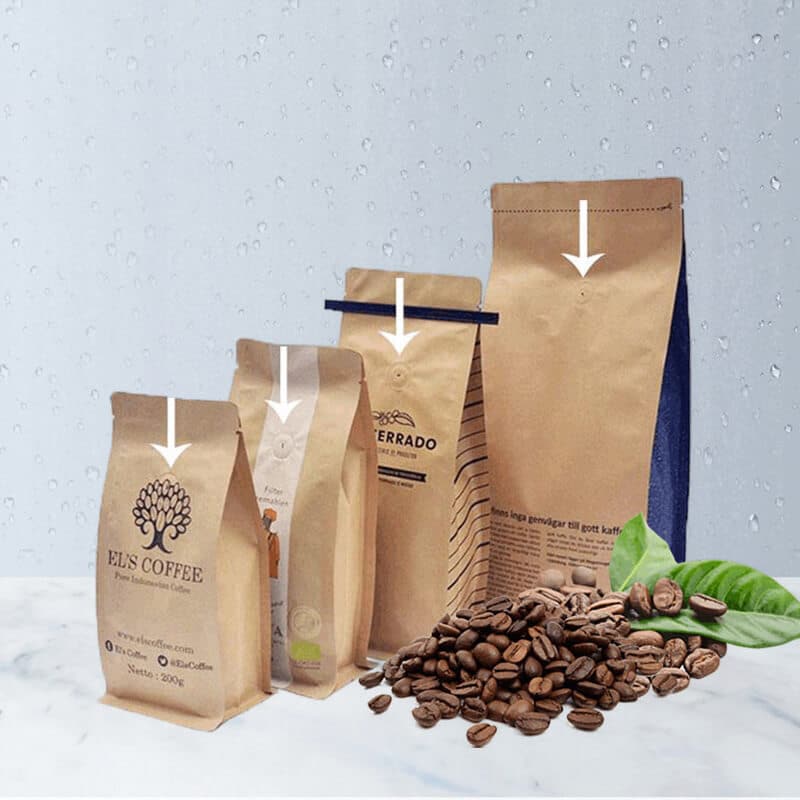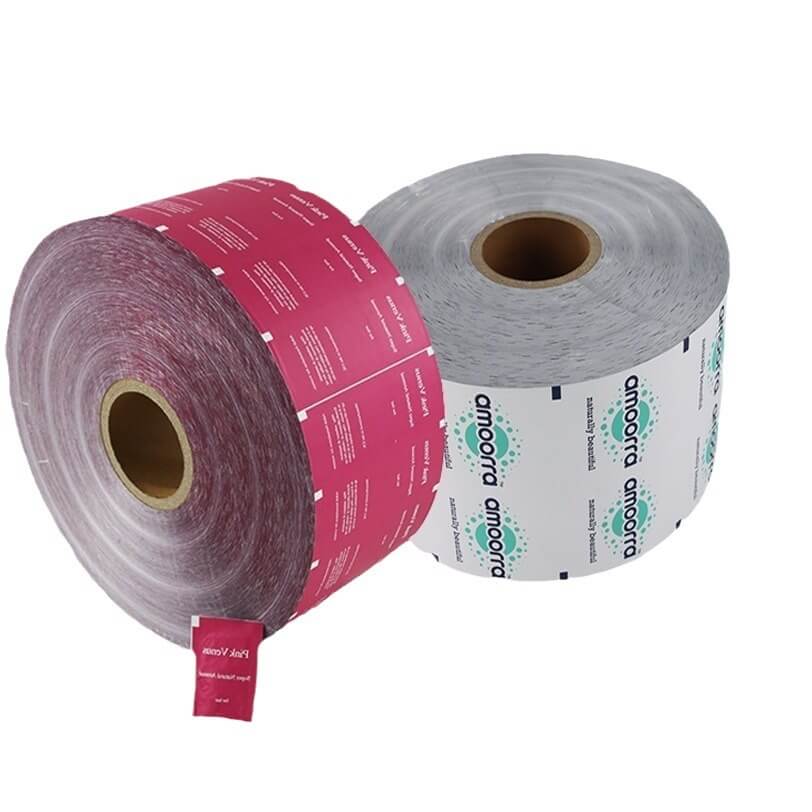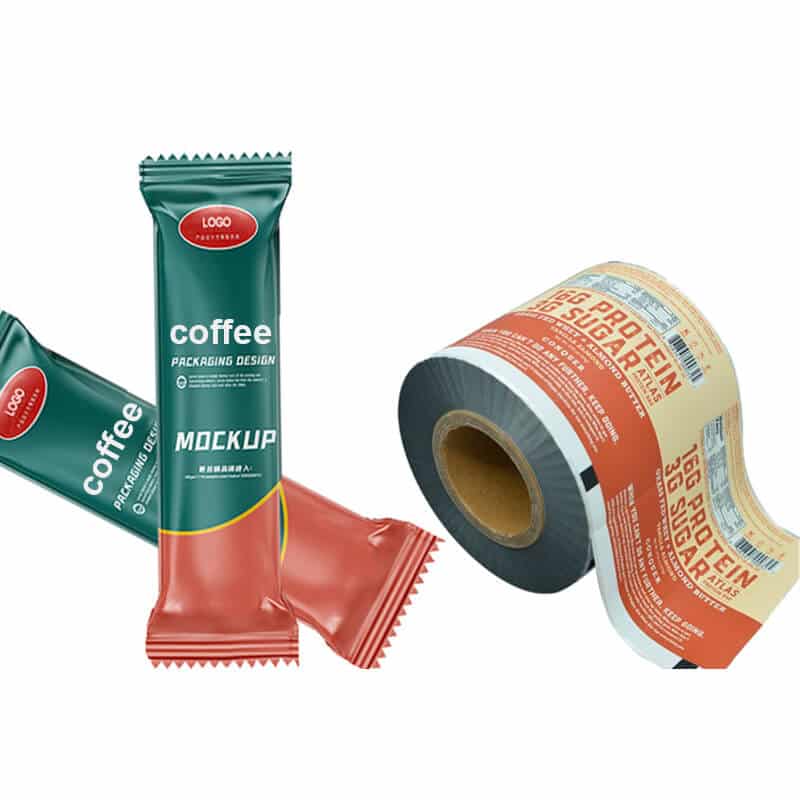We buy the advantage of the coffee beans, open the bag, and brew a cup of delicious coffee, but after opening the coffee beans, we have to know how to save. And how to keep the
The flavour of the open package of coffee beans is below, and we will answer your questions.
What’s the meaning of “keeping coffee beans tasted well”?
Keeping roasted coffee beans well is a process of releasing gas/ emitting carbon dioxide.
Because coffee beans that have just been finished roasting over a hot fire, about 2% of their container is carbon dioxide. And this large amount of carbon dioxide will follow the storage environment, storing equipment, or storing method to fly away. Which made the pressure of the packaging space higher than the outside one. In addition, the pressure helps the aromatic substances to make the oils and fats combined.
Allowing all the aromatic substances inside the coffee beans to reach a state where they can be easily extracted.
Generally, the coffee beans start to breath after the 3rd hour of roasting, which do not release any carbon dioxide, and tasted not in a good smell way. If you have ever brewed a cup of fresh coffee powder with hot water, you will find that it tastes amazing and chili hot with over-extracted wilting and pronounced acidity, and you will have a hard time putting it You will have a hard time thinking of the smooth and sweet taste.
What’s the usage of “keeping roasted coffee beans tasty?”
Although the flavor composition of a well roasted coffee bean has been roughly determined, the bean will be oxidized every day, thus affecting the flavor, which is one of the reasons why many baristas say that coffee beans change every day. Never overlook the importance of raising the beans, because coffee without well raised beans tends to have an unclean flavor.
First of all, under-raised coffee beans will have a “dry” feeling, which is the residual smoke and choking smell inside the coffee beans after being roasted at high temperatures, which needs to be removed after a period of time by emitting carbon dioxide, so compared to coffee without raised beans, coffee that has been left to raise beans for a few days has a cleaner taste and a more pronounced flavor. If the raising time is too short, the flavor of the coffee is not complete and not easy to brew, which is not a good roast; if the raising time is too long, in terms of freshness, it will definitely affect the maintenance of freshness at the back, resulting in the risk of not being fresh to the consumer, which is certainly not good either.
How to make them in prefect status during the raising coffee time?
Said so long, so how in the end should be raised? At this time another child joked: “free range ah”. Although it is enough to keep the coffee beans in the bag for a few days, but the “free range” environment is also need to pay attention to.
Try to have a one-way exhaust valve for the bag of beans, and keep the unopened coffee beans in a cool, dry, light-free environment with no irritating odor. (Refrigerators are divided into a freezing layer, a refrigerated layer, and a freezer).
About the time to raise beans, because the cafe or coffee brand roasting practices are not the same, different coffee beans roasting degree will be different, the damage to the structure of the coffee beans environmental conditions are also different, so there is no standard answer to raise beans time (how to break the ring?). (Metaphysics, depending on the degree of roasting of the coffee beans to determine the approximate time frame for raising beans.)
Although it sounds a bit metaphysical, we can determine the approximate time frame for raising beans based on the degree of roasting of the coffee beans.
The degree of roasting can be said to be one of the key factors affecting the raising time of the beans, the deeper the roasting degree, which equals the longer the coffee beans are heated, the more intense the caramelization reaction, and at the same time, because of the large amount of heat in a short period of time, triggering strong oxidation, so the coffee beans just after roasting will continue to carry out intense oxidation, resulting in massive exhaustion, in general, the time for raising beans of medium and deep roasted coffee will be shorter than that of lightly roasted Generally speaking, the bean raising time for medium and dark roasted coffee will be shorter than that for light roasted, and the general bean raising time is about 3-5 days (hand brewing). Of course, there is no need to raise, direct brewing of the statement. Because of the different methods of each family, there will be a great difference, maybe this roaster roasted coffee beans is higher maturity ratio than others, so no need to raise.
Compared to drip coffee beans, coffee beans used for espresso require a longer raising time, usually up to 10 or even 15 days. Because coffee machine extraction espresso is a kind of pressurized extraction, water is an inert liquid, like to flow to a looser place, so too much carbon dioxide caused by the resistance easily obstruct the water flow, resulting in channel effect, uneven extraction, the taste of coffee is naturally poor.
Three factors that affect the quality of coffee beans
Air, moisture, and heat are generally considered to be the three main factors affecting coffee beans’ flavour and quality. That’s why we typically keep coffee beans in a cool place and avoid direct sunlight.
Generally speaking, putting the coffee beans in zippered bags with air valves is better, or you can also choose airtight containers.
How to store coffee?
The shelf life of coffee beans is usually about one year; we should use the coffee as soon as possible after opening the package. Meanwhile, we should keep the coffee beans away from moisture, heat and sunlight.
Generally, the coffee bean preservation bags in the market are attached with one-way air holes, which usually squeeze out the carbon dioxide and no longer allow new air to enter the bag, preserving the freshness for a little longer.
If the beans are kept for more than 14 days, put them in small packages and freeze them in the freezer, not the refrigerator. The reason for freezing is to slow down the decay of the beans and to keep them dry and cold.
We can also buy the right amount of beans according to how often we drink coffee. It is not recommended to buy more than a pound of coffee beans; it is best to buy half a pound at a time or as little as 1/4 pound to keep freshness and flavour generation relatively stable.
Do I put the beans in the freezer?
Coffee beans can be kept frozen to extend their flavour life because at low temperatures, carbon dioxide emissions from the beans are slowed, and the rate of oxidation and metabolism is drastically reduced.
The rate of oxidation and metabolism is also drastically reduced, thus slowing down the rate of flavour loss.
How long can coffee beans be kept at room temperature?
The shelf life of coffee beans is usually one to two years. It is related to the surrounding environment, first the temperature factor and then the humidity factor. When the temperature is at room temperature of 10-20℃, coffee beans can be kept longer in a ventilated, cool, and dry place.
Roasted coffee beans’ moisture tends to be close to zero, so as long as the seal is good, the preservation time can even be up to decades. However, this operation is demanding, so the usual family is not commonly used. Buy back the coffee beans to be used as soon as possible to finish.
Although the shelf life of coffee beans is very long, the freshness period is very short; the freshness of coffee beans is only 2-3 weeks; with the prolongation of time, the coffee beans in the fresh aroma will gradually oxidize and lose the purchase coffee beans do not buy too much, drink how much to sell how much can be, so that the flavour is better.
Generally speaking, coffee beans’ shelf life is about 12 months, but the flavour at its peak usually lasts only 2-3 weeks, no more than 1 month.
Therefore, from a flavour appreciation point of view, the best flavour period of coffee beans is about 1 month after opening.
How to tell if your coffee is not fresh?
Coffee beans that are not fresh will affect the taste of your coffee, and even the best coffee beans may lose their aroma and flavour due to improper storage. The following are the signs of unfresh coffee beans.
- Appearance: Coffee beans should be bright and dark in colour. These beans are not fresh if they are dark or look a bit greasy.
- Aroma: The aroma of the coffee beans should be rich and aromatic. If they do not smell fresh, the beans are outdated. The aroma of unfresh coffee beans can degenerate into unpleasant odours such as dirty, dull or musty.
- Flavor: The flavour of the coffee bean should be a rich blend of coffee with a floral or chocolate-like taste. The coffee beans are not fresh if the taste becomes dull, lacks layers, or the sour (acidic) flavour increases.
- Storage location: Coffee beans should be stored in a dry, relaxed environment and protected from moisture. If the beans are not stored properly, they will quickly absorb air, humidity and other off-flavours, destroying their desirable taste.
- Grinding: If you try to use a grinder to grind coffee beans that are not fresh, you will find that the beans are not easy to grind but, on the contrary, more difficult to make into powder.
- Slow-flowing speed: When a cup of coffee is too slow, this may indicate that the beans are not fresh. A fast pace means the beans are ground too finely; a slow pace means the beans are ground too coarsely, or the moisture content of the beans is too high.
In conclusion, although coffee beans can be stored for a long time, making a perfect cup of coffee requires fresh beans, so we always need to recognize the freshness of coffee and the best taste.
How do you choose coffee packaging from packaging materials?

Suitable coffee packaging material can prolong the freshness period of coffee and make it fresher. Common coffee packaging materials are:
- Metal cans: Metal cans can isolate air and light, prevent oxidation and reduce heat impact while protecting against moisture and maintaining the aroma and flavour of the coffee. However, metal cans are more expensive to make, easy to rust, and not easy to stack.
- Glass carafe: Glass carafes can isolate light and air and will not affect the flavour and aroma of coffee. However, glass is easy to break and not easy to carry.
- Plastic bags: Plastic bags effectively maintain the quality of coffee, are relatively inexpensive, and are suitable for bulk packaging of coffee. Especially with an air valve and eight-side seal, coffee bags can exclude carbon dioxide, making them particularly suitable for packaging coffee beans.






